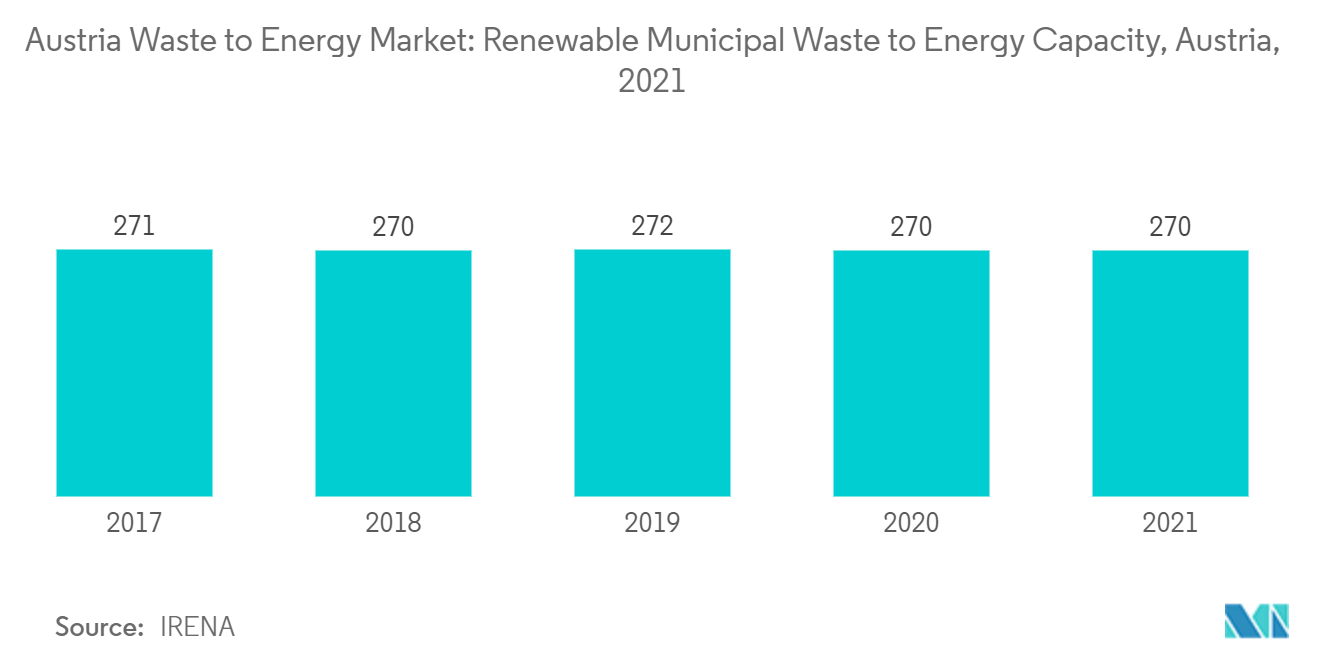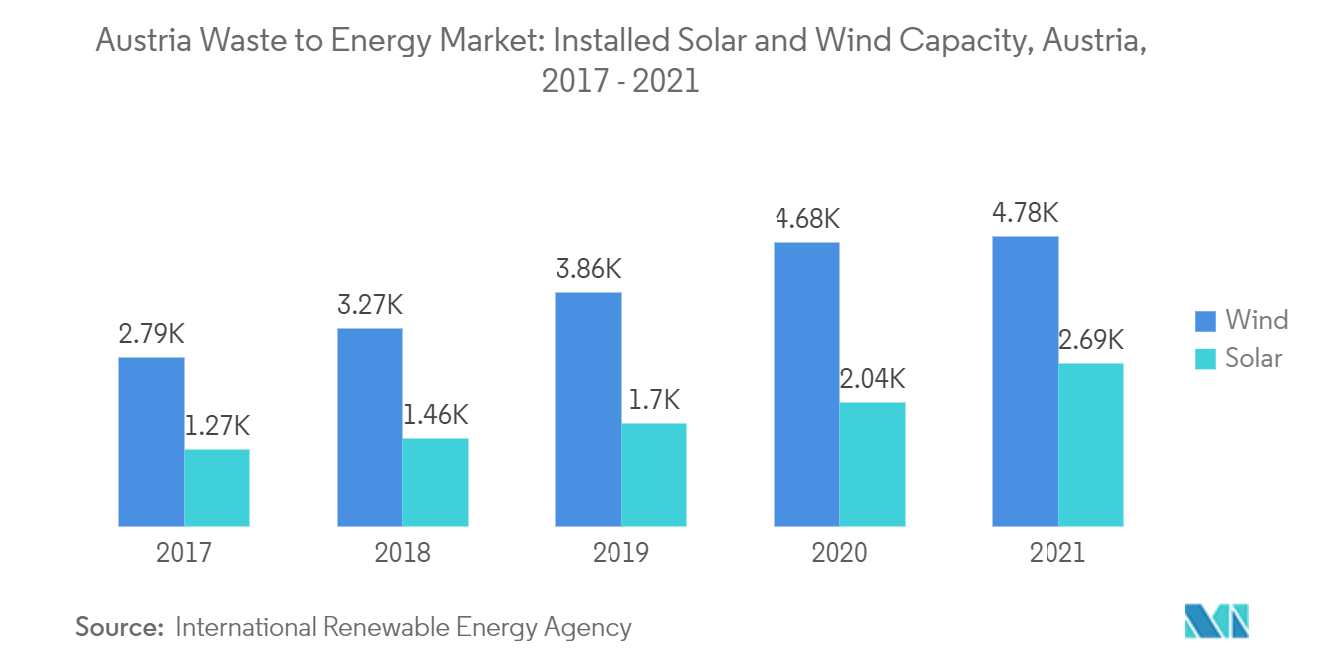Market Trends of Austria Waste to Energy Industry
This section covers the major market trends shaping the Austria Waste to Energy Market according to our research experts:
Growing Demand for Thermal-Based Waste-to-Energy Conversion
- As of 2021, thermal technology is expected to account for the highest market share in the waste-to-energy market. This trend of dominance by the thermal division is likely to continue in the coming years, owing to the increasing developments in incineration and gasification technologies.
- It is estimated that plants that utilize thermal power cogeneration (heating and cooling) and electricity generation can reach optimum efficiencies of 80%.
- In the present scenario, incineration is the most well-known waste-to-energy technology for Municipal Solid Waste (MSW) processing. As of 2021, according to International Renewable Energy Agency, renewable municipal waste-to-energy capacity stood at 270 MW.
- However, waste-to-energy technologies, particularly incineration, produce pollution and carry potential health safety risks. To reduce particulate and gas-phase emissions, incineration plant owners have adopted emerging technologies such as Dendro Liquid Energy (DLE), four times more efficient in electricity generation, with additional benefits of no-emission discharge. This has, in turn, led to a significant improvement in terms of environmental sustainability.

Environmental and Sustainability concerns limiting investments
- WtE plants, especially incineration-based plants in Europe, have been controversial due to their greenhouse gas emissions. The impact of such plants in decreasing the amount of waste available for recycling undermines the European Union's (EU) efforts to transition into a circular economy. The EU has set ambitious environmental targets to achieve carbon neutrality by 2050 and has total residual waste by 2030. Due to this, many European financial institutions choose to support greener energy alternatives with lower carbon footprints.
- They are higher in the waste hierarchy, excluding Waste-To-Energy incineration from their sustainability agenda. As WtE plants are not economically viable below a specific threshold capacity, a significant capital outlay is required for such projects. Therefore, more financing is needed to restrain the European WtE market during the forecast period considerably.
- Due to this, these funds support efforts to reduce waste generation by supporting investments in creating and expanding sustainable waste management activities such as waste recycling, segregation, and reuse. Moreover, these new regulations mandate that these funds cannot provide any financial support for treating residual waste, such as WtE incinerators, except for the outermost regions and technologies for material recovery.
- The Just Transition Fund, a USD 42 billion fund, is a part of the EU's Just Transition Mechanism, which creates a blueprint for achieving the EU's carbon neutrality target by 2050. As this fund invests only in sustainable projects in the long run and follows the objectives of the European Green Deal, its regulations clearly state that WtE incineration plants are excluded from any financial support.
- Finally, the European Investment Bank Group (EIB), which created the Climate Bank Roadmap, a sustainable development finance plan while supporting the EU Green Deal, has aligned itself with the EU Taxonomy regulation. The EIB stated that any project that receives financial assistance from the institution must comply with the EU Taxonomy Regulation's DNSH principle. Due to this, waste incineration is ineligible for receiving any financial support from the EIB.
- In August 2022, UNICredit Bank Austria and the European Investment Bank (EIB) planned to support investments in Austria's renewable energy and energy efficiency projects. To fund clean energy projects, the EIB will provide the Austrian bank with a framework loan worth up to USD 97.66 million, which will be incorporated into a credit portfolio worth up to USD 212.32 million. Renewable energy and energy efficiency projects are in high demand: the Austrian government intends to generate all its electricity by 2030 from wind, solar, and hydropower. A 100000 solar roof program will be part of the government's program, as well as decentralized photovoltaic systems. Hydropower, pumped storage, and wind farms are also part of the government's plan.
- Austria's total installed renewable energy capacity of nearly 22 GW in 2021, of which 4.7 GW comes from wind energy and 2.6 GW from solar energy. As renewable costs for technologies such as wind and solar have fallen, these technologies have grown rapidly and are expected to attract more investments in the current situation. This is expected to reduce investments in the WtE sector, restraining the market during the forecast period.


